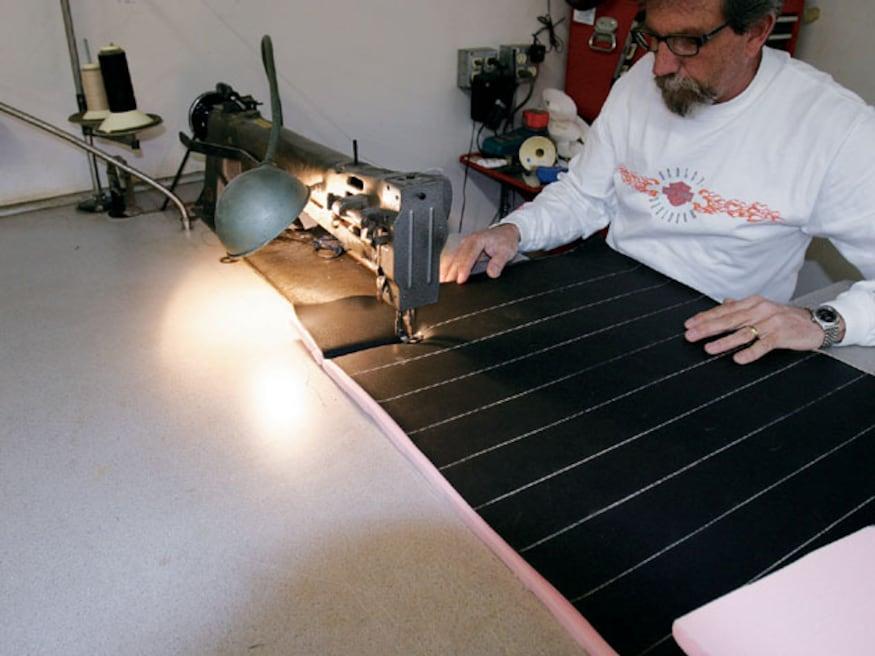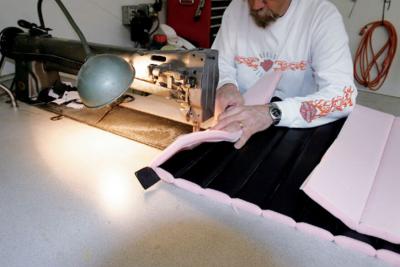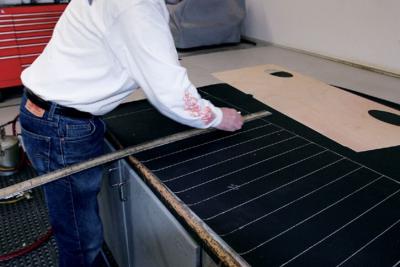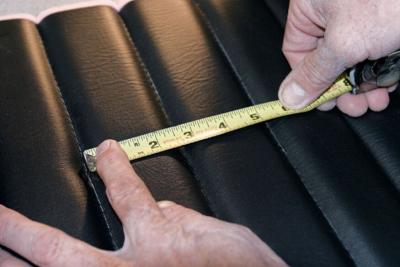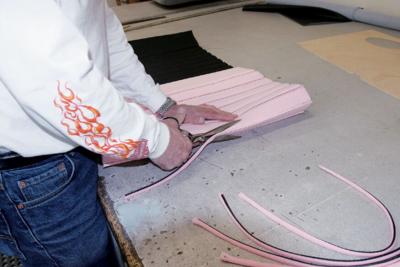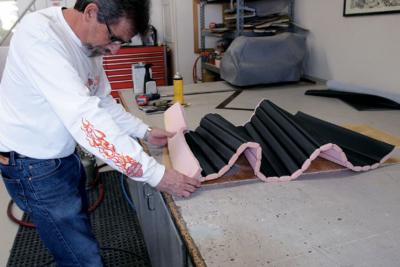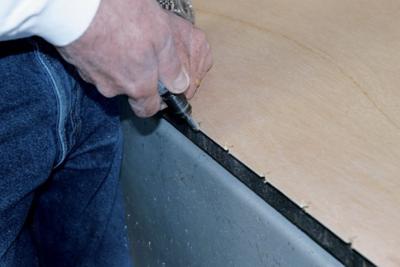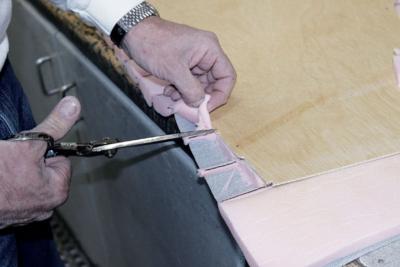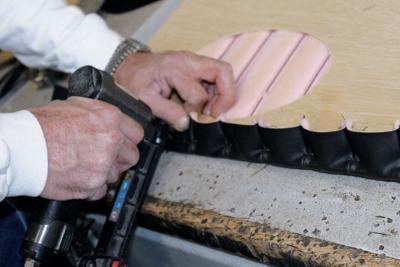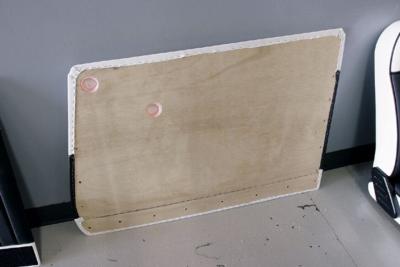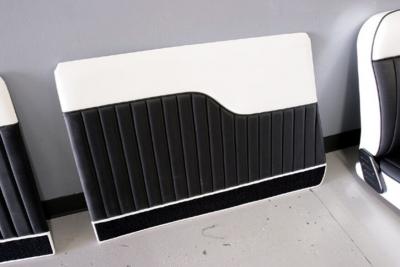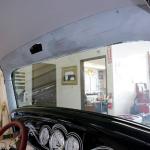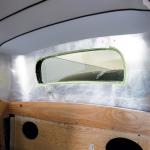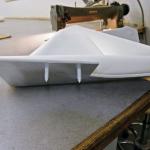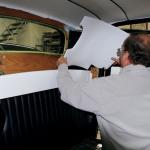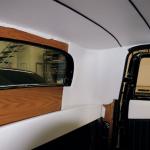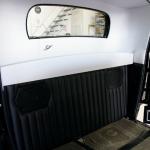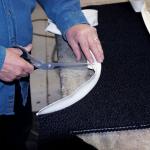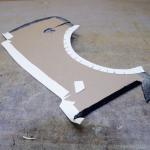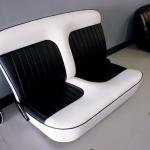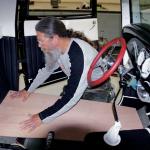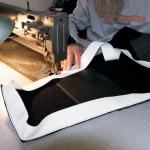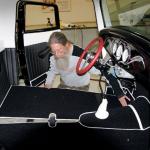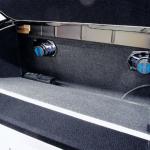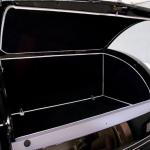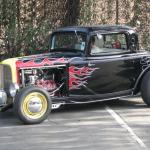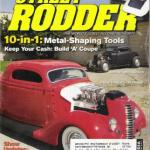Stitching An Interior - Interior Decorating
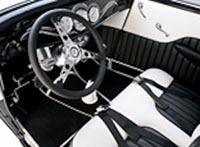 When it comes to stitching an interior, traditional or otherwise, Sid Chavers is one of the best-known names in the business. He has upholstered more award-winning, high-profile feature cars than we can count, and he's also the man behind the Bop Top that so many roadster owners have come to know and love. So, we looked to Sid when it came time for an interior in the Road Tour coupe, confident the results would be spectacular.
When it comes to stitching an interior, traditional or otherwise, Sid Chavers is one of the best-known names in the business. He has upholstered more award-winning, high-profile feature cars than we can count, and he's also the man behind the Bop Top that so many roadster owners have come to know and love. So, we looked to Sid when it came time for an interior in the Road Tour coupe, confident the results would be spectacular.
From a design standpoint, Sid breaks interiors down into four styles: original, traditional, newstalgia, and high-tech. Original-style interiors follow the look of the '30s and '40s, with subdued colors and a simple overall design. Traditional interiors are in the late-'40s and '50s style; the design is generally more complicated, often incorporating tuck 'n' roll and multiple colors. Newstalgia is a blend of old and new, modern lines, materials and colors, and is generally more contoured, often using broad, flat pleats. Finally, there is the modern, high-tech look. These interiors feature lots of dimension with high and low panels, and highly bolstered seats with panels that blend together. Of course the important thing is to match the interior styling with the rest of the car, and as our coupe was being built in the style of the McMullen roadster, traditional was the way to go.
All the interior panels of our coupe were built from scratch. Generally, these pieces are based on one of three types of material-waterproof panel board, chipboard (a heavy cardboard), or 1/8-inch mahogany. Aluminum is used in some cases where the panel has to hold its shape. Aluminum panels were formed for the rear corners of the body, the header above the windshield, and the cover for the air conditioning hoses. Mahogany doorskins were used for door and kick panels; inexpensive and easy to work with, after being covered with upholstery material, they are held in place by modern plastic panel retention clips.
There are a number of choices when it comes to choosing a seat-an original can be redone, a built-in can be fabricated, or the route we chose, an aftermarket bench design from Wise Guys. Built with 16-gauge steel frames, Wise Guys seats are available in solid and split-back bench designs, as well as buckets. An array of features come standard, including no-sag springs, multi-density foam, reclining mechanisms, fold-down center armrests, and 12-volt power receptacles, to name a few. In addition, power slide, power six-way pedestals, power lumbar supports, and seat heaters are optional. Sid re-covered the seat with black pleated inserts surrounded by smooth, white vinyl to follow the McMullen theme.
Attention to detail is something that will set the interior of one car apart from another. As an example, even though the area is mostly hidden, there is an upholstered panel behind the bench seat, and another panel hides the stereo equipment in the trunk. But while attention to detail is standard procedure for many stitchers, Sid has a few tricks that set his work apart from most others-like the way he does carpeting. Rather than simply cutting the carpet and gluing it to the floor, he treats it like another upholstery panel. By covering wood panels with carpet, the edges stay perfectly straight and don't curl, which often happens.
While there isn't adequate space to show a stitch-by-stitch account of upholstering the coupe, we would like to cover the high points and pass on some of Sid's techniques. And if you're ready to tackle stitching an interior yourself, we highly recommend Sid's two new how-to videos-one is on seats, the other on panels, and there are more to come. Maybe you'll get the same spectacular results we did.
